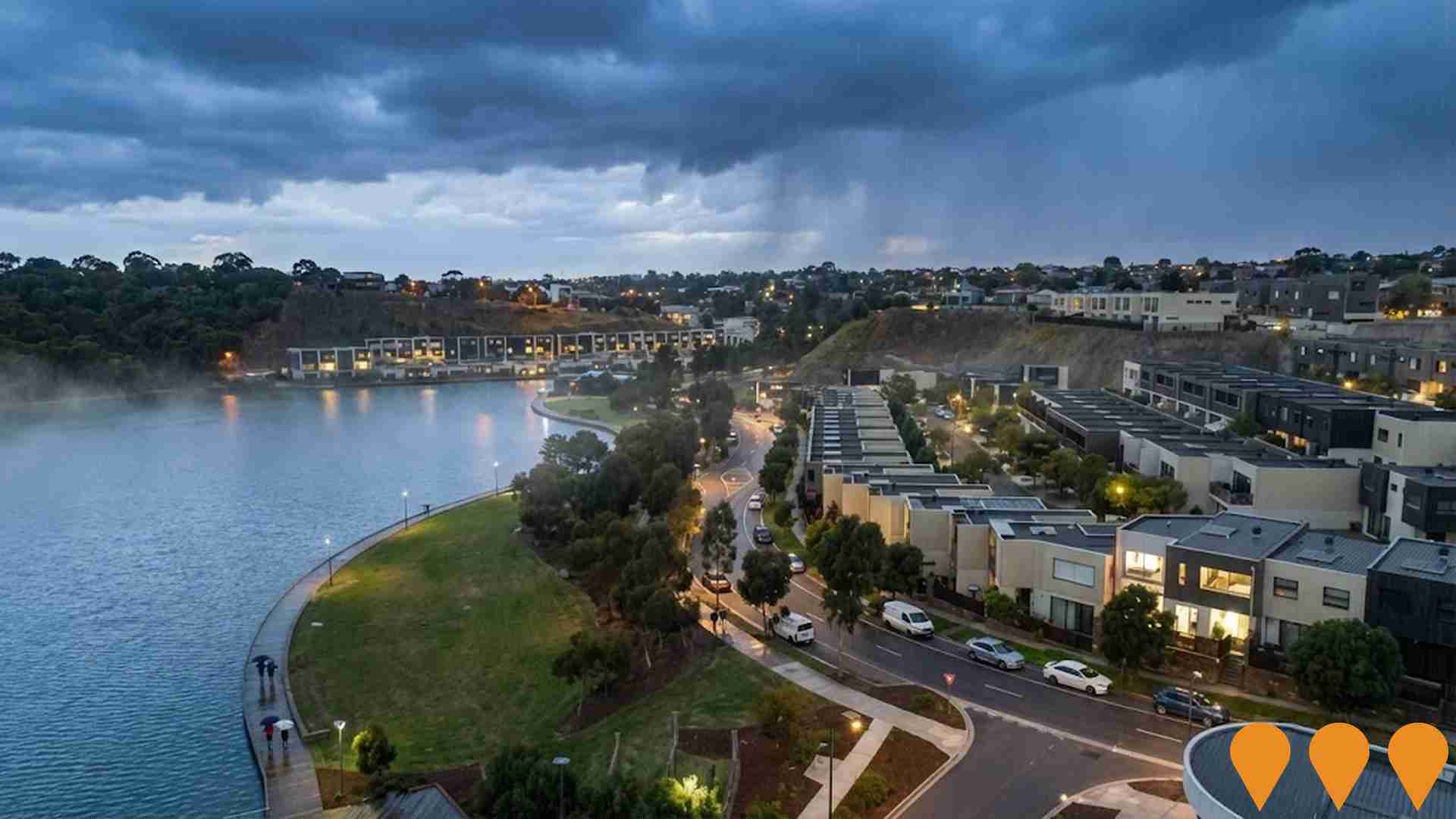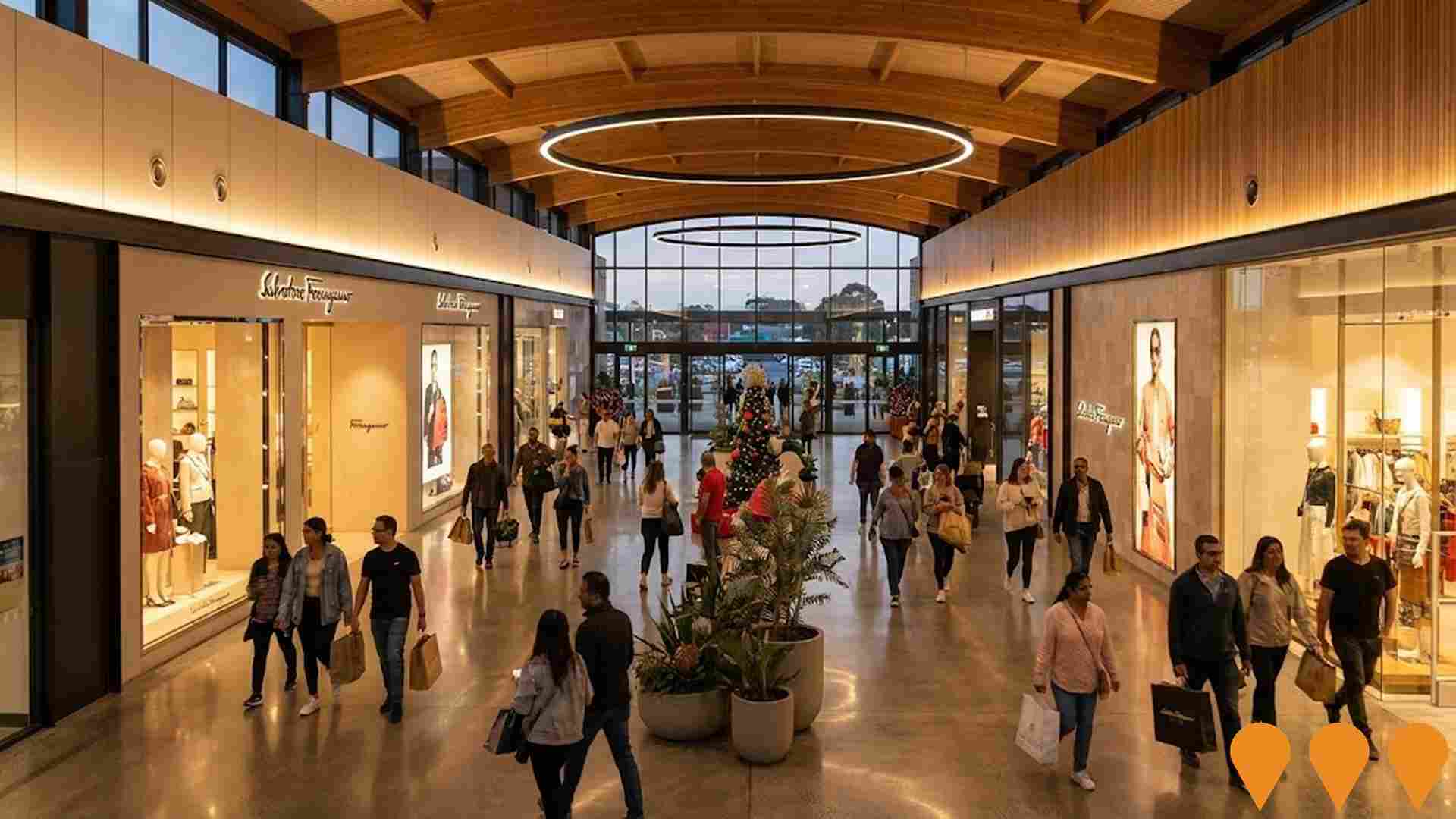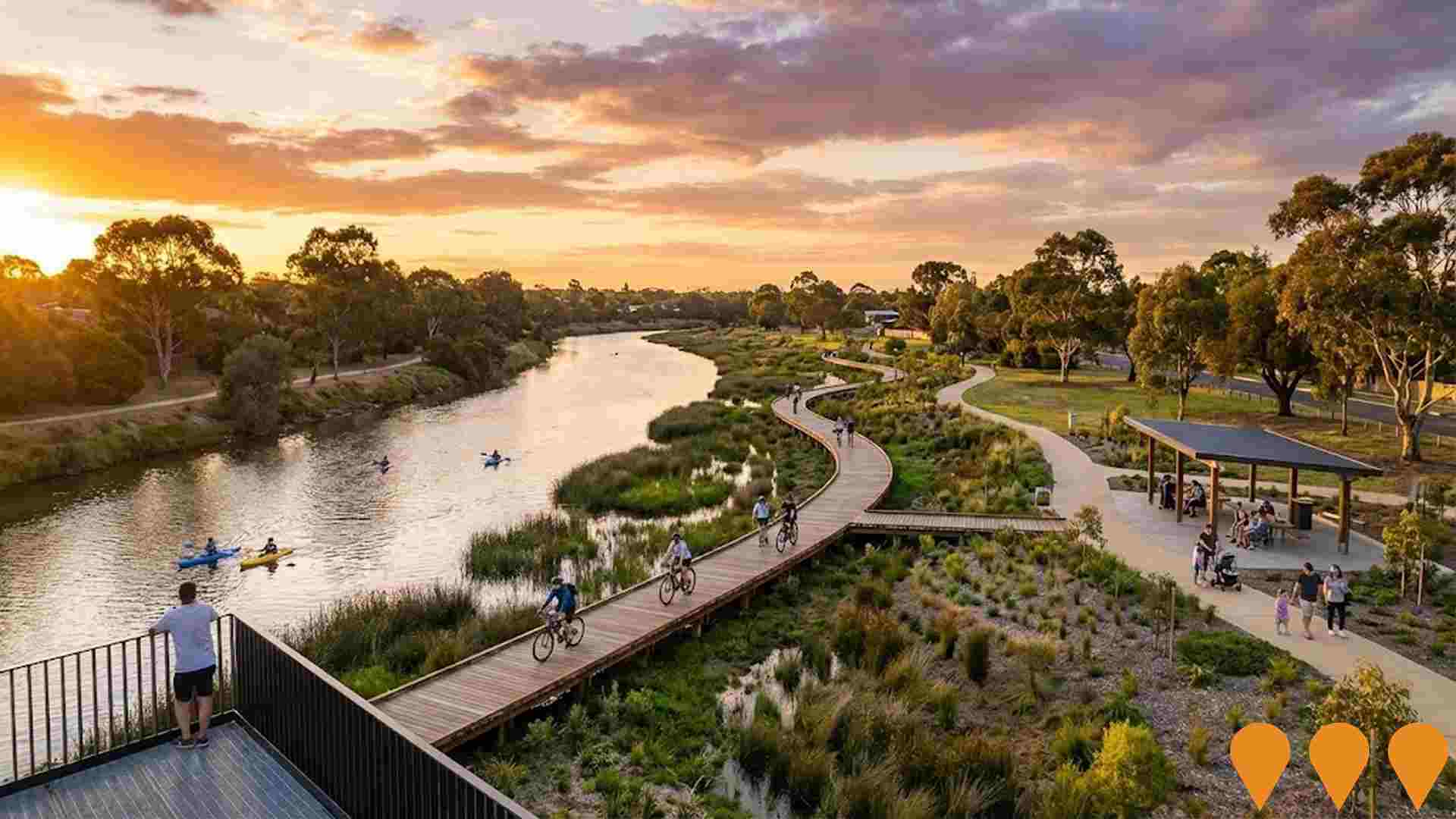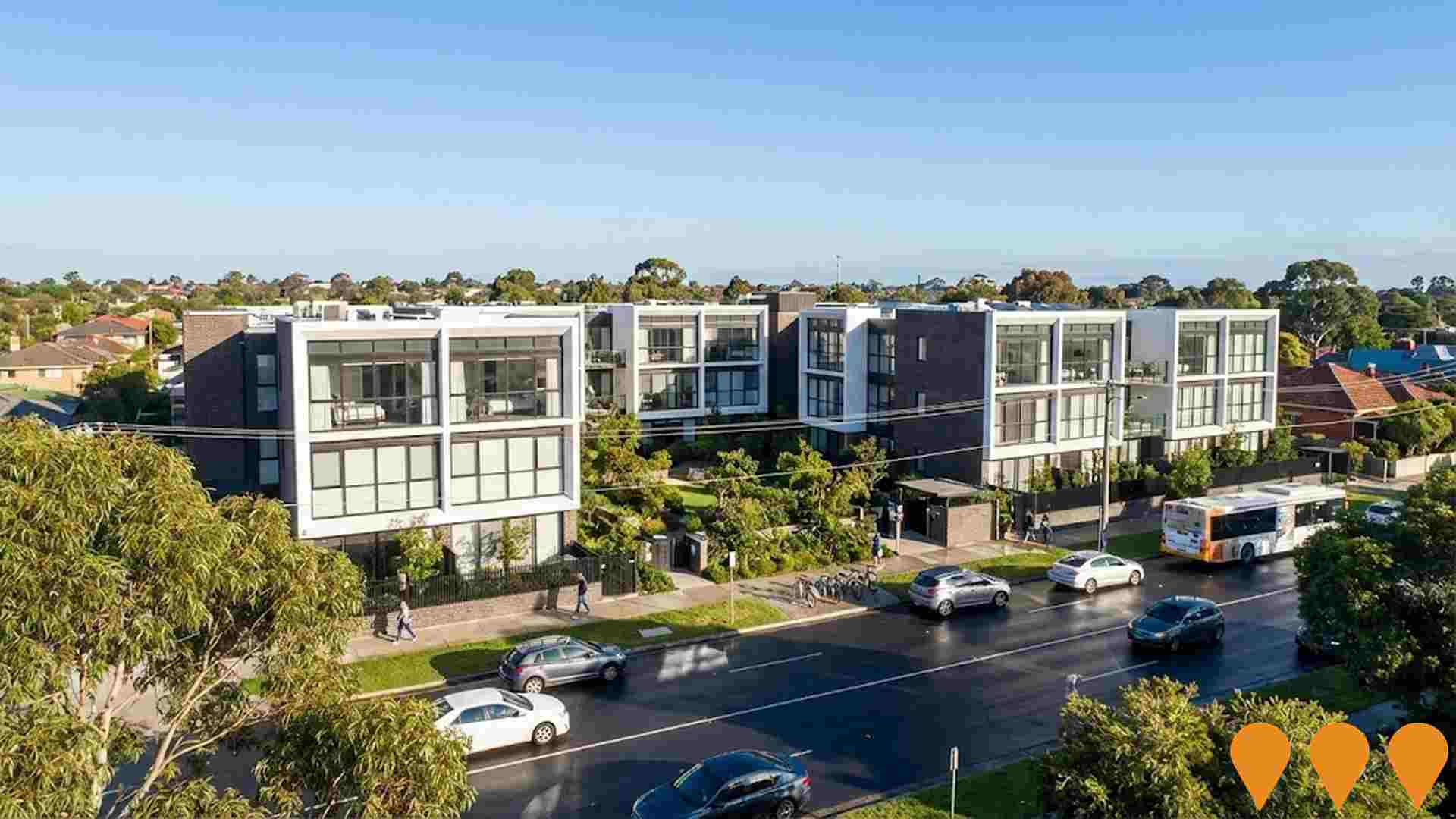Chart Color Schemes
est. as @ -- *
ABS ERP | -- people | --
2021 Census | -- people
Sales Activity
Curious about local property values? Filter the chart to assess the volume and appreciation (including resales) trends and regional comparisons, or scroll to the map below view this information at an individual property level.
Find a Recent Sale
Sales Detail
Population
Population growth drivers in Niddrie - Essendon West are strong compared to national averages based on AreaSearch's ranking of recent, and medium to long-term trends
Niddrie - Essendon West's population is around 7,953 as of Aug 2025. This reflects an increase of 493 people since the 2021 Census, which reported a population of 7,460 people. The change is inferred from the estimated resident population of 7,925 in June 2024 and an additional 58 validated new addresses since the Census date. This level of population equates to a density ratio of 2,840 persons per square kilometer, placing it in the upper quartile relative to national locations assessed by AreaSearch. Niddrie - Essendon West's growth rate of 6.6% since the 2021 census exceeded the SA3 area's growth rate of 4.0%. Population growth was primarily driven by overseas migration contributing approximately 63.1% of overall population gains during recent periods.
AreaSearch is adopting ABS/Geoscience Australia projections for each SA2 area, released in 2024 with a base year of 2022. For areas not covered by this data, AreaSearch utilises the VIC State Government's Regional/LGA projections released in 2023, adjusted using a method of weighted aggregation of population growth from LGA to SA2 levels. Growth rates by age group are applied across all areas for years 2032 to 2041. Based on demographic trends and latest population numbers, the area is projected to grow by 1,031 persons to 2041, recording a gain of 12.6% in total over the 17 years.
Frequently Asked Questions - Population
Development
Recent residential development output has been above average within Niddrie - Essendon West when compared nationally
Niddrie - Essendon West has seen approximately 66 new homes approved annually over the past five financial years, totalling 330 homes. As of FY26, 4 approvals have been recorded. On average, 1 new resident per year per dwelling constructed has been observed between FY21 and FY25, indicating that supply meets or exceeds demand, providing greater buyer choice and supporting potential population growth above projections. The average construction cost value of these homes is $645,000, somewhat higher than regional norms, reflecting quality-focused development.
This financial year has seen $9.0 million in commercial development approvals, suggesting the area's residential character. Comparatively, Niddrie - Essendon West shows moderately higher new home approvals than Greater Melbourne, with 27.0% above the regional average per person over the past five years. This preserves reasonable buyer options while sustaining existing property demand. The new development consists of 30.0% standalone homes and 70.0% attached dwellings, focusing on higher-density living to create more affordable entry points for downsizers, investors, and first-home buyers. This represents a significant change from the current housing mix, which is currently 66.0% houses.
With around 163 people per dwelling approval, Niddrie - Essendon West exhibits characteristics of a growth area. Population forecasts indicate that the area will gain approximately 1,003 residents by 2041. Given current construction levels, housing supply should adequately meet demand, creating favourable conditions for buyers and potentially enabling population growth that exceeds current forecasts.
Frequently Asked Questions - Development
Infrastructure
Niddrie - Essendon West has strong levels of nearby infrastructure activity, ranking in the top 40% nationally
Seven projects identified by AreaSearch are expected to impact the area significantly. These include the Niddrie Keilor Road Activity Centre Structure Plan, LUMA Sunshine North, Airport Toyota Expansion, and Textron Aviation Hangar 83. The following details projects likely to be most relevant.
Professional plan users can use the search below to filter and access additional projects.
INFRASTRUCTURE SEARCH
 Denotes AI-based impression for illustrative purposes only, not to be taken as definitive under any circumstances. Please follow links and conduct other investigations from the project's source for actual imagery. Developers and project owners wishing us to use original imagery please Contact Us and we will do so.
Denotes AI-based impression for illustrative purposes only, not to be taken as definitive under any circumstances. Please follow links and conduct other investigations from the project's source for actual imagery. Developers and project owners wishing us to use original imagery please Contact Us and we will do so.
Frequently Asked Questions - Infrastructure
Keilor East Station - Melbourne Airport Rail
New premium railway station at Keilor East forming part of the Melbourne Airport Rail project. The station will provide the first direct rail connection for more than 150,000 residents in Keilor East, Airport West and Keilor Park. Travel time to Melbourne Airport will be approximately 6 minutes and to Southern Cross Station approximately 27 minutes via the Metro Tunnel. Features include elevated station with island platform, integrated bus interchange, 500-space park-and-ride, kiss-and-ride facilities, and full accessibility. Early works completed; major construction contract awarded to Rail Projects Victoria Delivery Partners (Acciona, CPB Contractors, AECOM, Deutsche Bahn) in December 2024 with works commencing 2025.

Niddrie (Keilor Road) Activity Centre) Structure Plan
The Niddrie (Keilor Road) Activity Centre Structure Plan was approved in November 2024 via Amendment GC251 as part of the Victorian Government's Activity Centres Program. It establishes a planning framework to deliver at least 3,400 new dwellings by 2051 through mixed-use development, with building heights up to 10 storeys (36 metres) in the core area and 6-8 storeys elsewhere. The plan rezones land to Activity Centre Zone (ACZ1) and applies new DDOs and parking overlays to guide future development around Keilor Road and North Essendon.
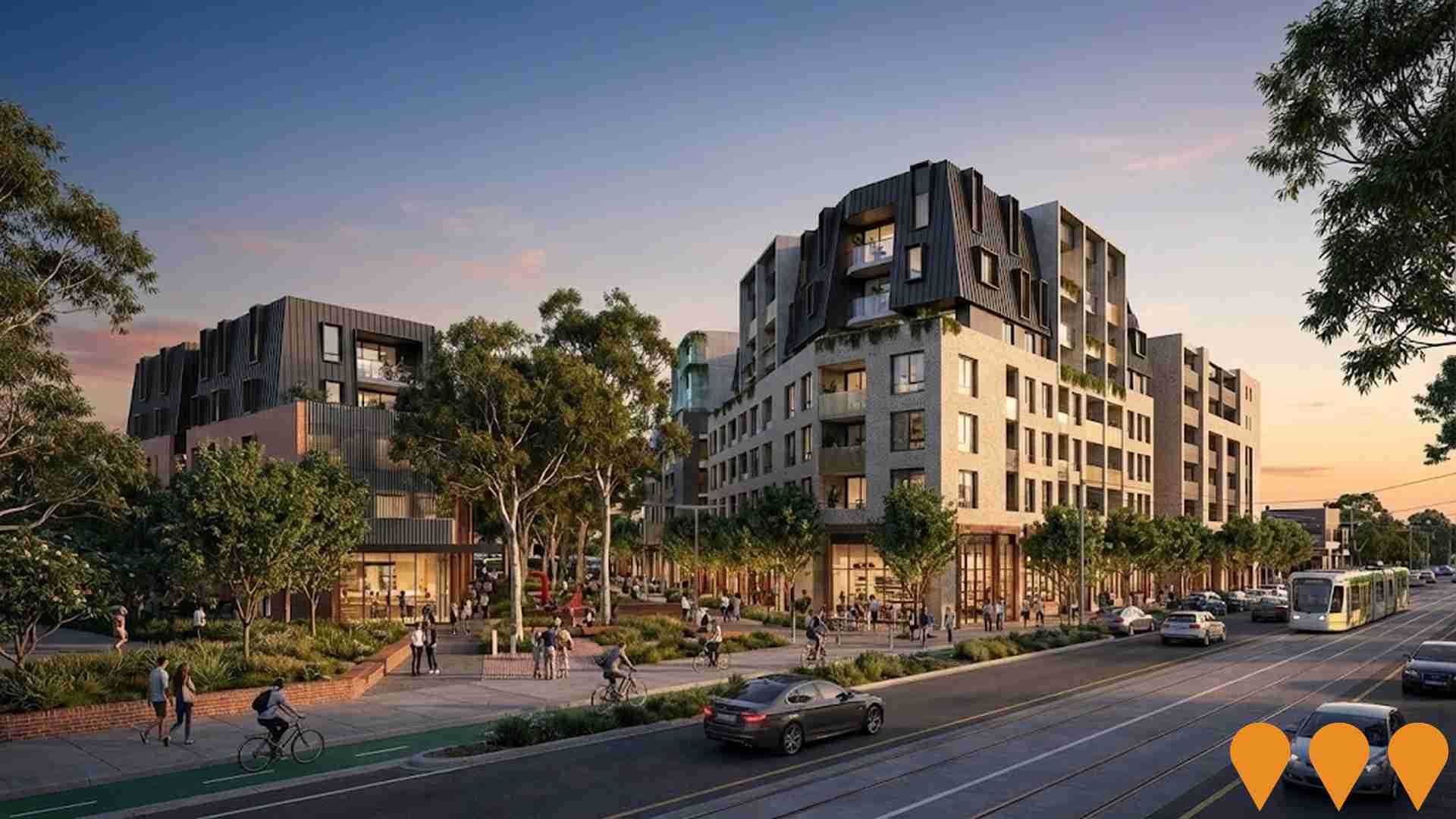
Hart Precinct
30-hectare greenfield light industrial and aviation business park at Essendon Fields, 15 minutes from Melbourne CBD. Officially opened February 2025 and named after aviation pioneer James 'Bob' Hart. Offers large-format industrial lots with direct taxiway access, modern hangars and commercial facilities. Stage 1 tenants include Autex Industries (50,000 sqm advanced manufacturing facility), Modscape (20,000 sqm modular construction factory) and Dutton Group wholesale vehicle storage. Forms a key part of the ongoing transformation of the former Essendon Airport into a mixed-use employment and lifestyle precinct.

LUMA Sunshine North
Mixed-use development including residential, commercial, and community spaces in Sunshine North. Part of urban renewal initiative for western Melbourne.
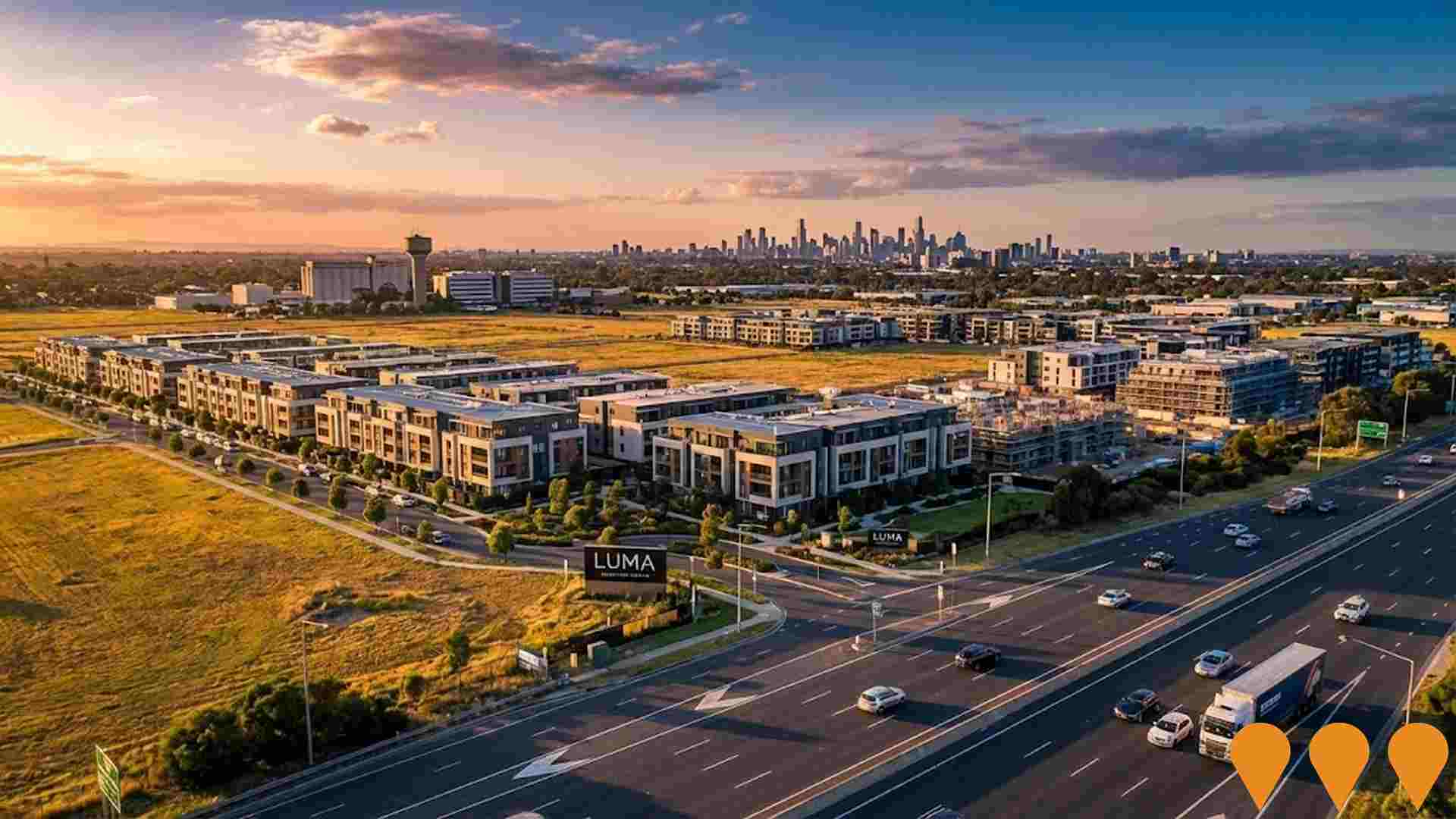
Airport Toyota Expansion
Expansion into larger custom-built 10,900 sqm facility with 2,500 sqm showroom, 2,000 sqm workshop and mezzanine showroom. Designed by JMA Architects, built by 2Construct. Part of Australia's largest automotive precinct with $1 billion annual sales.

Textron Aviation Hangar 83
A purpose-built 3,343 square meter hangar facility for Textron Aviation's business jet maintenance, repair, and overhaul operations at Essendon Fields Airport. The new facility is twice the size of the existing one and will support increased capacity for servicing Beechcraft, Cessna, and Hawker aircraft, employing approximately 23 staff including engineers and apprentices.
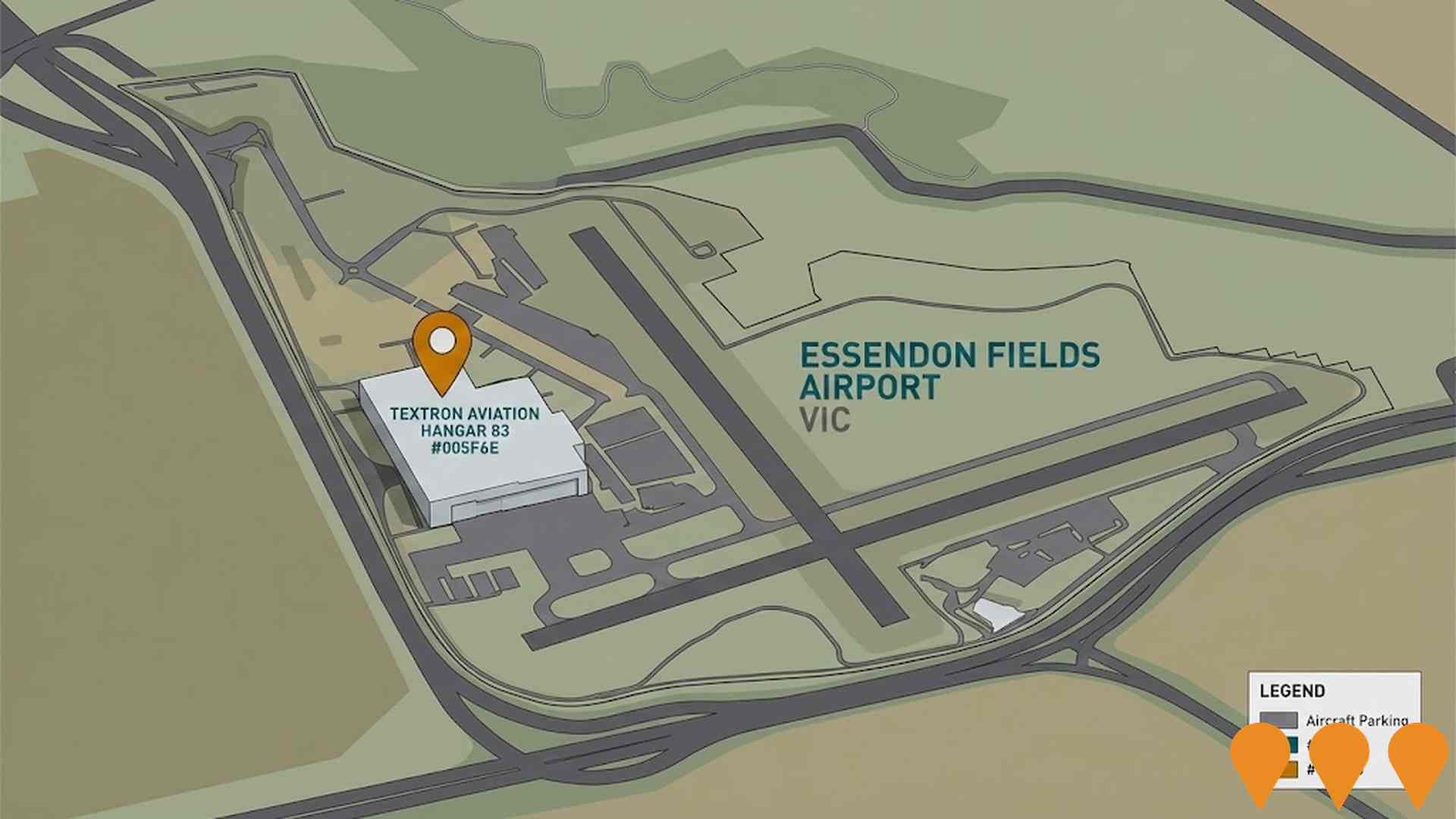
North Essendon Activity Centre Plan
The North Essendon Activity Centre Plan, developed by the Victorian Planning Authority, aims to unlock approximately 5,100 new homes by 2051 along the Mount Alexander Road corridor. It focuses on medium to high-density housing development, improved connectivity, and infrastructure upgrades to support population growth in established suburbs while maintaining community character.
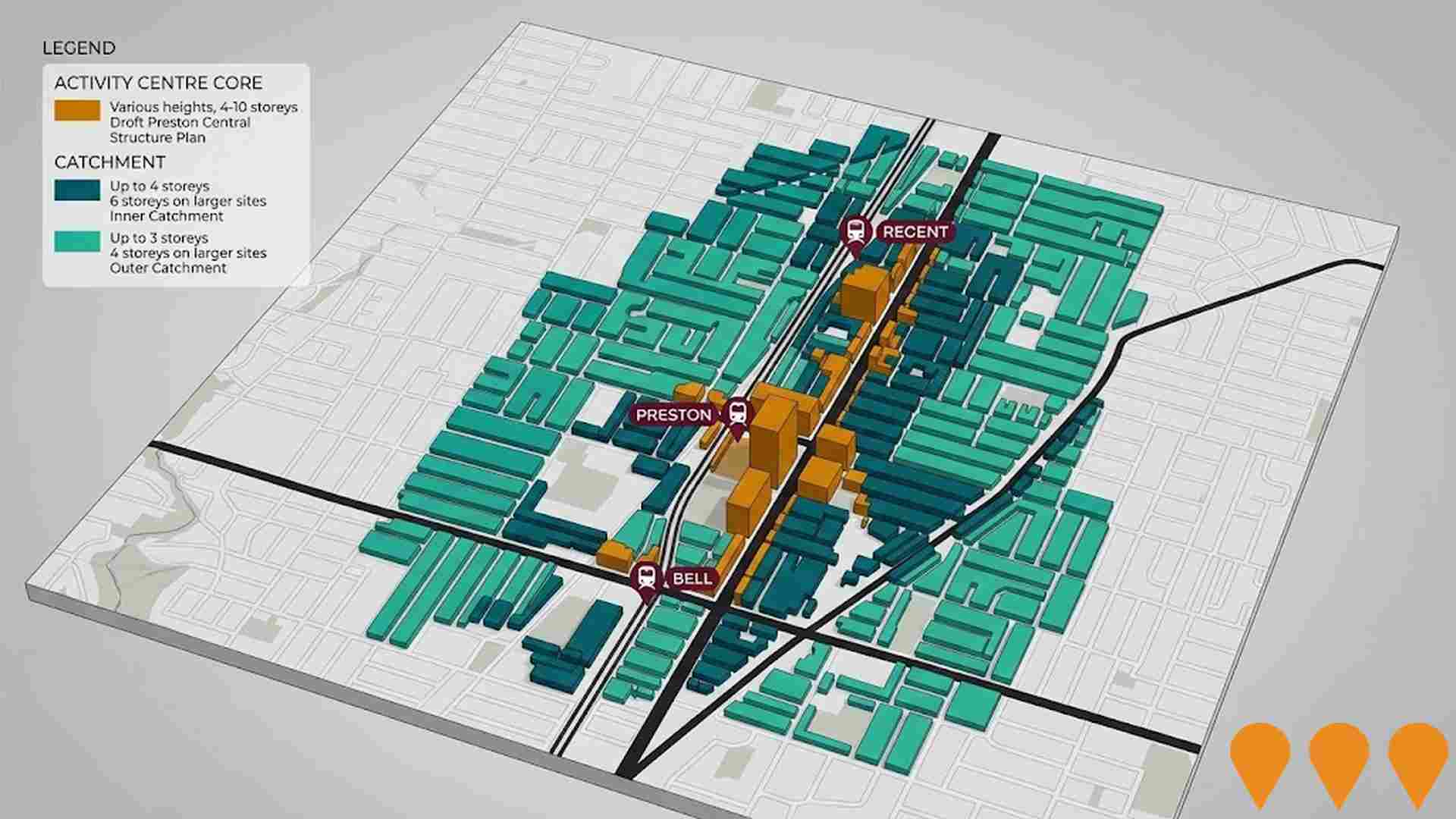
Bell Business Centre & Ambulance Victoria Operations Centre
The Bell Business Centre at Essendon Fields has been redeveloped, with Ambulance Victoria as the anchor tenant occupying 1,007 square meters for its Essendon Fields Operations Centre. This includes services for Adult Retrieval Victoria (ARV) and Victorian Stroke Telemedicine (VST), enhancing operational collaboration with the nearby Air Ambulance division.
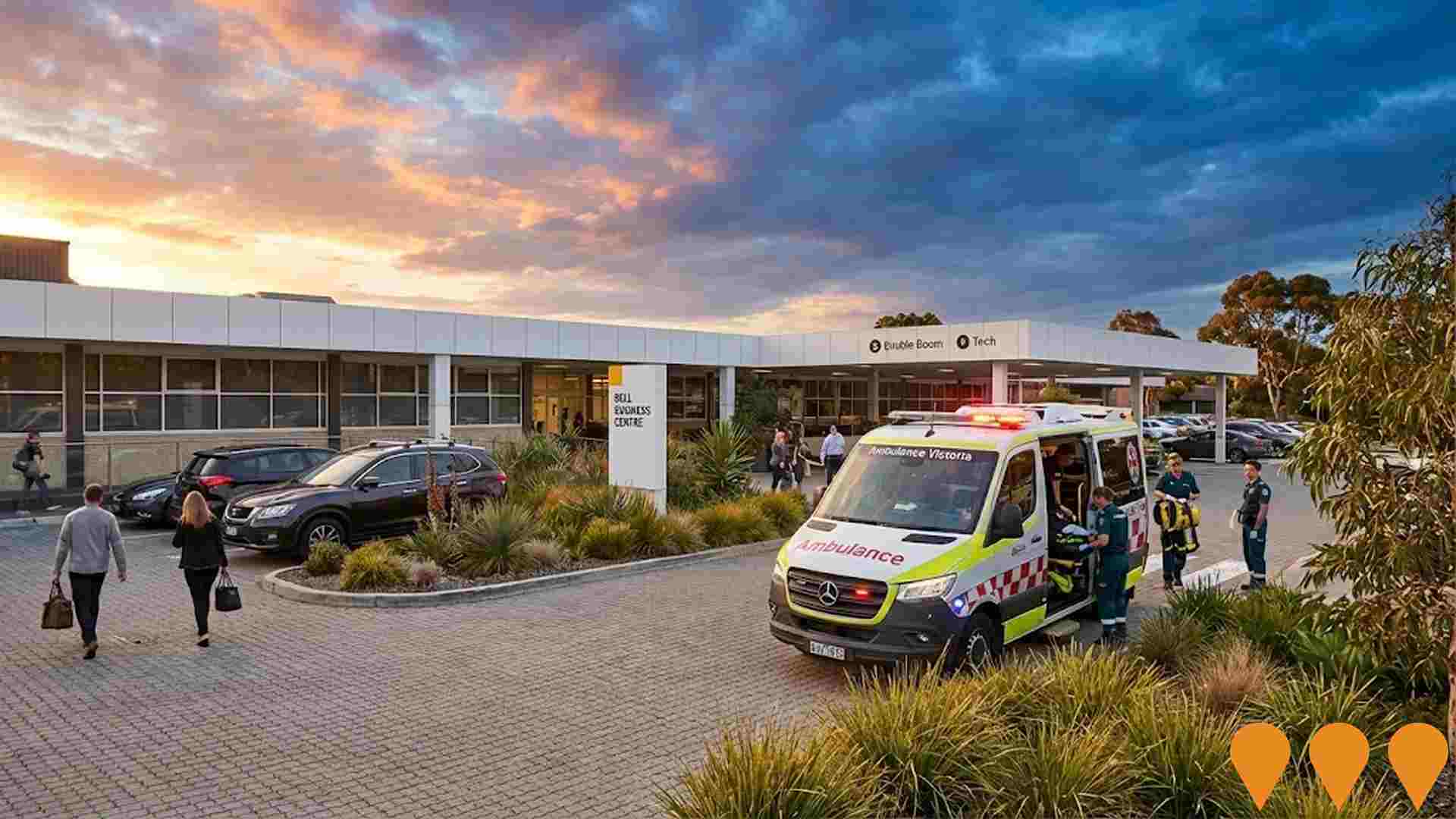
Employment
AreaSearch analysis of employment trends sees Niddrie - Essendon West performing better than 90% of local markets assessed across Australia
Niddrie - Essendon West has a well-educated workforce with strong representation in professional services. The unemployment rate was 2.1% as of June 2025, which is lower than Greater Melbourne's rate of 4.6%.
Employment growth over the past year was estimated at 3.9%. There were 5,012 residents employed by June 2025, with an unemployment rate of 2.6% and workforce participation at 68.5%, compared to Greater Melbourne's 64.1%. Key industries for employment among residents are construction, health care & social assistance, and education & training. Construction is particularly specialized, employing 1.3 times the regional level.
However, health care & social assistance employs only 11.5% of local workers, below Greater Melbourne's 14.2%. The area offers limited local employment opportunities, as indicated by Census data comparing working population to resident population. Between June 2024 and June 2025, employment increased by 3.9%, labour force grew by 4.3%, resulting in an unemployment rise of 0.4 percentage points. In comparison, Greater Melbourne recorded employment growth of 3.5%, labour force growth of 4.0%, with unemployment rising 0.5 percentage points. National employment forecasts from Jobs and Skills Australia, issued in May 2025, project national employment expansion by 6.6% over five years and 13.7% over ten years. Applying these projections to Niddrie - Essendon West's employment mix suggests local growth of approximately 6.6%% over five years and 13.4% over ten years.
Frequently Asked Questions - Employment
Income
Income metrics indicate excellent economic conditions, with the area achieving higher performance than 75% of national locations assessed by AreaSearch
Niddrie-Essendon West has an extremely high national income level according to AreaSearch data from the ATO for financial year 2022. The median income among taxpayers is $61,953 and the average income stands at $81,129. These figures compare with Greater Melbourne's median of $54,892 and average of $73,761. Based on a 12.16% Wage Price Index growth since financial year 2022, current estimates would be approximately $69,486 (median) and $90,994 (average) by September 2025. Census data from 2021 shows Niddrie-Essendon West's household, family, and personal incomes rank highly nationally, between the 77th and 80th percentiles. The largest income segment comprises 29.9% earning $1,500-$2,999 weekly (2,377 residents). Higher earners make up a substantial presence with 35.2% exceeding $3,000 weekly. Housing accounts for 14.1% of income, and residents rank within the 82nd percentile for disposable income. The area's SEIFA income ranking places it in the 8th decile.
Frequently Asked Questions - Income
Housing
Niddrie - Essendon West displays a diverse mix of dwelling types, with a higher proportion of rental properties than the broader region
Niddrie-Essendon West's dwelling structure in 2016 comprised 65.5% houses and 34.5% other dwellings, compared to Melbourne metro's 75.8% houses and 24.2% other dwellings. Home ownership was at 37.8%, with mortgaged dwellings at 37.8% and rented ones at 24.4%. The median monthly mortgage repayment in the area was $2,400, while the median weekly rent figure was recorded at $435. Nationally, Niddrie-Essendon West's mortgage repayments were significantly higher than the Australian average of $1,863, with rents substantially above the national figure of $375.
Frequently Asked Questions - Housing
Household Composition
Niddrie - Essendon West has a typical household mix, with a fairly typical median household size
Family households account for 72.5% of all households, consisting of couples with children (38.0%), couples without children (21.8%), and single parent families (11.3%). Non-family households make up the remaining 27.5%, with lone person households at 24.6% and group households comprising 2.7%. The median household size is 2.6 people, which aligns with the Greater Melbourne average.
Frequently Asked Questions - Households
Local Schools & Education
The educational profile of Niddrie - Essendon West exceeds national averages, with above-average qualification levels and academic performance metrics
The area's university qualification rate is 35.1%, exceeding both the SA4 region average of 27.7% and Australia's national average of 30.4%. Bachelor degrees are most common at 23.5%, followed by postgraduate qualifications (7.8%) and graduate diplomas (3.8%). Vocational credentials are also prominent, with 29.2% of residents aged 15+ holding such qualifications – advanced diplomas at 11.7% and certificates at 17.5%.
Educational participation is high, with 29.8% of residents currently enrolled in formal education. This includes primary (9.1%), secondary (8.9%), and tertiary (6.3%) education. Niddrie-Essendon West has four schools with a combined enrollment of 3,211 students. The area's socio-educational conditions are above average, with an ICSEA score of 1060. Educational provision is conventional, split between two primary and two secondary institutions. The area functions as an education hub, with 40.4 school places per 100 residents – significantly higher than the regional average of 24.1 – attracting students from surrounding communities.
Frequently Asked Questions - Education
Schools Detail
Nearby Services & Amenities
Transport
Transport servicing is high compared to other areas nationally based on assessment of service frequency, route connectivity and accessibility
Public transport analysis shows 40 active transport stops operating within Niddrie - Essendon West. These include a mix of light rail and bus services. There are 10 individual routes serving these stops, collectively providing 5,345 weekly passenger trips.
Transport accessibility is rated as good, with residents typically located 207 meters from the nearest transport stop. Service frequency averages 763 trips per day across all routes, equating to approximately 133 weekly trips per individual stop.
Frequently Asked Questions - Transport
Transport Stops Detail
Health
Niddrie - Essendon West's residents are extremely healthy with both young and old age cohorts seeing low prevalence of common health conditions
Analysis shows strong health performance in Niddrie-Essendon West. Both young and elderly cohorts have low prevalence of common conditions. Private health cover rate is high at approximately 61% (4,835 people), compared to Greater Melbourne's 58.6% and the national average of 55.3%.
Asthma and arthritis are most common, affecting 7.2% and 7.0% respectively. 73.0% report no medical ailments, higher than Greater Melbourne's 70.1%. The area has 16.6% aged 65 and over (1,322 people), lower than Greater Melbourne's 21.9%. Senior health outcomes are above average, similar to the general population's profile.
Frequently Asked Questions - Health
Cultural Diversity
Niddrie - Essendon West was found to be more culturally diverse than the vast majority of local markets in Australia, upon assessment of a range of language and cultural background related metrics
Niddrie-Essendon West has a higher cultural diversity than most local areas, with 21.3% of its population born overseas and 22.1% speaking a language other than English at home. Christianity is the predominant religion in Niddrie-Essendon West, comprising 65.5% of the population, compared to 66.4% across Greater Melbourne. The top three ancestry groups are Australian (19.4%), English (18.3%), and Italian (15.0%).
Notably, Croatian (2.0%) and Maltese (2.8%) ethnicities are equally represented in Niddrie-Essendon West as they are regionally, while Polish is slightly higher at 1.2%.
Frequently Asked Questions - Diversity
Age
Niddrie - Essendon West's population is slightly older than the national pattern
Niddrie - Essendon West has a median age of 40, which is higher than Greater Melbourne's figure of 37 and Australia's figure of 38 years. The 55-64 cohort is notably over-represented at 13.0% locally compared to the Greater Melbourne average, while the 25-34 age group is under-represented at 11.8%. Between 2021 and present, the 15-24 age group grew from 12.8% to 14.1%, and the 55-64 cohort increased from 12.0% to 13.0%. Conversely, the 45-54 cohort declined from 15.9% to 14.2%, and the 5-14 age group dropped from 12.4% to 11.2%. Demographic modeling suggests that by 2041, Niddrie - Essendon West's age profile will evolve significantly. The 55-64 age cohort is projected to expand by 329 people (32%), growing from 1,035 to 1,365. Notably, the combined 65+ age groups are expected to account for 50% of total population growth, reflecting the area's aging demographic profile. Meanwhile, the 5-14 and 0-4 cohorts are projected to experience population declines.
